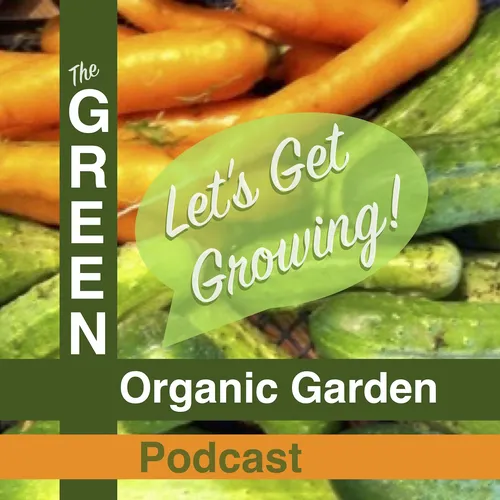429. Five Reasons You Should Build A Kitchen Garden
- Author
- Jackie Marie Beyer
- Published
- Fri 05 Sep 2025
- Episode Link
- https://organicgardenerpodcast.com/429-5-reasons-to-build-a-kitchen-garden
People often ask me, “What is a kitchen garden?” What it is not is a garden in your kitchen. It’s not a tower full of lettuce growing in water next to your microwave or a pot of herbs on your windowsill. The answer is actually quite simple: a kitchen garden is essentially a bed of fruits, vegetables, and herbs you like to use for cooking, located near your kitchen. Convenience is one of the biggest keys to successful gardening.
One ~ A kitchen garden is easier to care for if it’s located just outside your kitchen door, where you do your cooking. This might not always be possible, depending on your garden's position in the sun, but the closer you can get to accessing your main cooking area, the better.
Two ~ A kitchen garden is easier to harvest from, making it more likely you will eat those vegetables you took so much time to grow. And they’ll thrive the more time you spend in your beds harvesting and caring for your little seedlings.
Three ~ A kitchen garden that uses deep beds will also make your veggies grow stronger. This is because the roots can go deeper, water can circulate around them more fluently, and they can soak up all the nutrients they need. Additionally, the best soil possible is included.
Four ~ A kitchen garden is easier to water. A kitchen usually has a water supply, so even if you don’t have a hose that will reach, filling a watering can from the sink will keep those baby seedlings moist when they are first germinating, one of the struggles of growing plants from seed.
Five ~ A kitchen garden can contain a compost pipe, also known as a worm tube (just a piece of perforated 6” or bigger PVC pipe), making recycling your kitchen scraps easier than you’ve ever believed, while providing fresh nutrients to your garden all season long. To keep animals out, just cover with a plate or an upside-down clay pot bottom. Drop leftover food scraps, coffee grounds, egg shells, and even weeds down the tube. Worms will then turn these bits of waste into nutritious food for your soil and plants. You want your pipe to be about 21/2 feet long with the lower 18 inches buried into the soil.
Last spring, my husband finally made my kitchen garden dreams come true, and this year I built one for my mom in her garden. We planted companion plants like basil and tomatoes, cucumbers and peppers, and sunflowers along the back of the bed near the garage to attract beneficial insects. We added nasturtiums, which not only add a peppery flavor and pretty color to summer salads but also serve as a natural deterrent to pests with their strong odor. An old trellis I found made an excellent climbing post for pole beans, something I can’t plant in our frosty Montana beds — and some lettuce, arugula, and radishes to pick first in the early spring.
Despite my mom's repeated assurances that she could never get eggplants to grow, a couple of Black Beauties, did a great job producing a few delicious purple aubergines, one of her favorite vegetables to cook. Each corner grew a big squash, and I could only dream about my mom’s famous flower fritters that were a delicacy when we were kids.
As we head into fall, it's a great time to design and build a kitchen garden for next spring and get started collecting those compost scraps, creating lots of healthy soil to fill those beds with.
This podcast uses the following third-party services for analysis:
Spotify Ad Analytics - https://www.spotify.com/us/legal/ad-analytics-privacy-policy/
